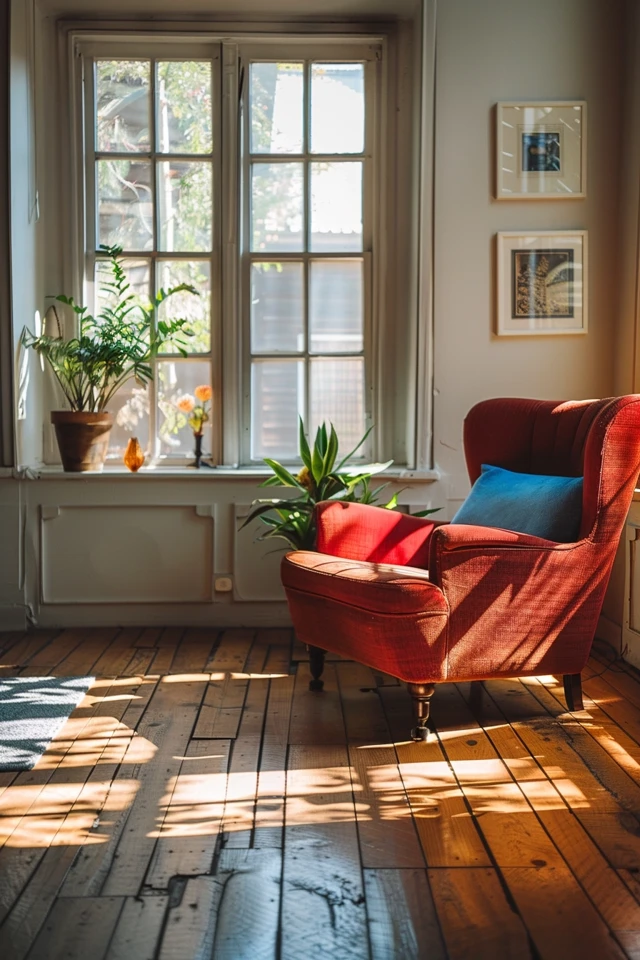Slippery hardwood floors can pose a serious safety hazard in your home. Fortunately, there are several effective solutions to reduce the risk of accidents and create a safer environment for you and your family.
Common causes of slippery wood floors include dirt and grime, excessive cleaners or wax, wetness, and wearing socks or soft-soled shoes. To make hardwood floors less slippery, it’s important to take proactive measures.
One simple solution is to add non-slip door mats and area rugs in high traffic areas. These mats provide traction and help prevent slip accidents. Regularly cleaning your floors is also essential to remove dirt and grime that can contribute to slipperiness.
When cleaning hardwood floors, it’s crucial to choose the right cleaning solution. Avoid using oil soaps, as they can leave a greasy residue and make the floors more slippery. Instead, opt for a gentle cleaner specifically designed for wood floors.
For extra safety, consider using non-slip stair treads or adhesive strips on hardwood stairs. These provide an added grip and reduce the risk of accidents when climbing up or down the stairs.
By following these safety tips and implementing non-slip solutions, you can significantly reduce slipperiness on wood floors and create a secure and accident-free environment in your home.

Key Takeaways:
- Adding non-slip door mats and area rugs can provide traction and reduce slip accidents on wood floors.
- Regularly cleaning hardwood floors is essential to remove dirt and grime that contribute to slipperiness.
- Choose the right cleaning solution for wood floors and avoid using oil soaps.
- Consider using non-slip stair treads or adhesive strips on hardwood stairs for added safety.
- By implementing these safety measures, you can prevent slip accidents and create a secure environment in your home.
How To Clean Sticky Hardwood Floors to Reduce Slipperiness
If you have sticky spots on your hardwood floors, there are effective ways to clean them and reduce slipperiness. Follow these steps to restore the natural traction of your hardwood floors:
- Prep the area: Start by moving furniture out of the way to have enough space to work.
- Mix a cleaning solution: Depending on the cause of the stickiness, you can create a homemade cleaning solution. For sticky floors caused by grime or dirt, mix a vinegar solution by combining equal parts of vinegar and water. Alternatively, you can make a baking soda paste by mixing baking soda with water or a mild dish soap.
- Apply the solution: Use a sponge or mop to apply the cleaning solution to the sticky areas on your hardwood floors. Gently scrub the spots using circular motions to loosen the stickiness.
- Clean the area: Once you’ve applied the cleaning solution, thoroughly clean the sticky spots, ensuring that all residue is removed. For tougher sticky spots, you may need to repeat the process or use a soft-bristled brush.
- Dry the area: After cleaning, make sure to dry the area thoroughly to prevent moisture buildup. You can use a dry mop or cloth to absorb any excess liquid.
Regular cleaning is essential to maintain the cleanliness and slip-resistant properties of your hardwood floors. However, if your floors have accumulated multiple layers of wax or other coatings over time, sanding may be required to remove them. Sanding can help restore the original texture of the wood and improve traction.

Enhancing Traction with Non-Skid Paint and Anti-Slip Coatings
In addition to regular cleaning and sanding, you can consider using non-skid paint for wood or anti-slip coatings to further enhance the traction and reduce slipperiness on your hardwood floors. These products are designed to add a protective layer that increases grip and makes your floors less slippery.
Non-skid paint for wood is a durable option that can be applied directly to your hardwood floors. It creates a textured surface that improves traction, making your floors safer to walk on. Another option is using anti-slip coatings that provide a similar non-slip effect.
By following these cleaning and maintenance steps, and considering non-skid paint or anti-slip coatings, you can effectively clean sticky hardwood floors and significantly reduce slipperiness, creating a safer environment for you and your family.

Safeguarding Wooden Floors with Non-Slip Solutions
To safeguard your wooden floors and reduce slipperiness, there are various non-slip solutions available that can help ensure the safety of your home. One key aspect is regular cleaning to prevent dirt buildup, which can make your floors slippery and increase the risk of accidents. Adequate maintenance and cleanliness are crucial in maintaining proper traction and grip.
Sanding is an effective technique to remove wax or polish coatings from your wooden floors. However, it’s important to note that sanding alone may not add extra grip. Therefore, it’s essential to find a non-slip solution that provides the necessary traction after sanding. Instead of relying solely on rugs or mats, which can move around and pose a slipping hazard of their own, consider using non-slip paint specifically designed for wood.
Brands like Dura Grip and Floor Grip offer durable non-slip paints that create a textured surface and provide an effective coating for both interior and exterior wooden floors. These products are designed to enhance traction and ensure safety while preserving the aesthetic appeal of your wooden floors. For smaller or irregularly shaped surfaces, SlipDoctors Extra Fine Clear Spray is an excellent option that offers effective slip resistance.
By choosing the right non-slip solution for your wooden floors, you can protect your home and loved ones from accidents caused by slippery surfaces. Safeguarding your wooden floors with non-slip solutions not only adds an extra layer of safety, but it also allows you to enjoy the beauty and warmth of your wooden flooring without compromising on security.

